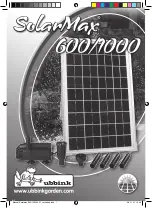
o
Lever the friction spring seats (16) out of the appliance box, in order to reveal the screw
holes of the installation socket.
o
Align the mounting frame and screw it to the appliance box of the wall. Observe marking
TOP
= TOP. Use the enclosed set of screws.
o
Connect power supply to the terminal (5).
o
Connect the KNX bus voltage to the terminal (7).
o
Optional: Connect the external temperature sensor to the terminal (6).
i
Programming button and LED are accessible only from the back of the device. If possible,
load the physical address into the device before the final installation (see chapter 5.3.
Commissioning).
o
Attach the device onto the mounting frame until it locks in place.
o
Tighten the retaining screw (11) on the bottom of the mounting frame. Use a Pozi-Drive
screwdriver, size 0.
Figure 14
(18) Friction spring seat
Dismantling the Glass sensor
o
If available, slacken the retaining screw on the bottom edge. Use a Pozi-Drive screwdriver,
size 0.
o
Press the enclosed dismantling too in the centre of the glass sensor.
o
Using the dismantling tool, pull the glass sensor evenly out of the anchoring - friction
springs or mounting frame.
o
Disconnect the connection cables.
5.3 Commissioning
Loading the physical address and application software
Configuration and commissioning with ETS3.0d with Patch A or later.
The device is connected and ready for operation.
The rear side of the device must be accessible.
o
Press the Programming button (9).
The programming LED (8) shows the programming state red.
o
Assign physical address.
The programming LED goes out.
o
Write the physical address on the device label.
Seite 11/13
15.02.2013
32586901
97-09635-000
KNX
Touch/Glass sensor 2gang / 3gang with room thermostat































